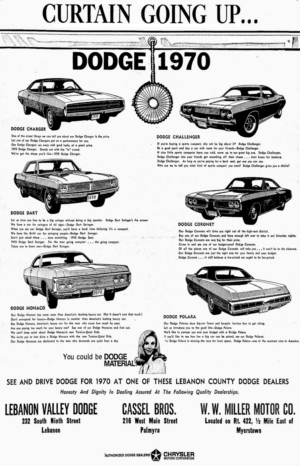And why it was more fun when they did

Dis you know it was a US President who was responsible for the autumn launch dates, not some secret agreement by the automakers? The Automobile Quarterly wrote that “in 1935 President Franklin D. Roosevelt had urged car manufacturers to advance their introductions of new models by two months to help alleviate the traditional slump in employment during the fall months.” Until then, model change announcements co-incided with the start of the following year’s calendar.
Although President Roosevelt’s motives were aimed at keeping the country working, he did us a favor. When September through November launches became the norm they involved all sorts of fascinating secrecy, combined with local dealer promotions that were great fun to observe.
For example, automobiles shipped by truck, as most of them were, would sometimes be covered in canvas. A boy delivering papers early in the morning might spot such a tractor-trailer carrying a half-dozen new cars and suddenly forget his customers as he peddled at top speed to the showroom in hopes of watching the cars come off the ramp. If he was lucky he’d be first in his neighborhood to admire the shiny chrome and fancy new grilles.
Dealers often covered the inside of showroom windows with paper (or sometimes soap) so that no one could see the cars and for a couple of days, at least, selling from the showroom was suspended. At the same time, signwriters were hired to tease passing onlookers with messages like, “Coming Sept 15, the Sensational New 1964 Buicks!” The paperboy’s envious friends (and sometimes even a few adults) would drop by after dark, hoping to find a slit in the paper seams through which they might get a sneak peek at the new cars.
Dealers, of course, used the opportunity to invite existing owners, future prospects, and even a few dignitaries, to pre-launch unveilings. Invitations were sometimes sent via postcards embellished with glamorous new model photos or illustrations. Who could resist? If the dealer was big and rich, the event would take the form of a lavish party, with live music, food, wine, and speeches. But even the small-town dealer offered some kind of spread to his guests, who delightedly ran their fingers over newly-shaped fenders and crawled inside to admire the latest approach to dashboard design.
All this was backed by national ad campaigns which included teaser ads followed on the next day by, at the very least, double-page spreads, more often with multi-page inserts. Many months of work by ad agency writers and art directors and highly-paid photographers went into those print and television campaigns which were often backed by showroom banners and floor displays.
In truth, much of what was touted as “all new” would be little more than changes to grilles (the all-important face) or trim. Not all prospective owners were fooled by such smoke and mirrors but they enjoyed it just the same and any change was an excuse to get rid of the old and move ahead with the new.
Quite a few years ago the fun of autumn new car launches slipped away. Annual auto shows became a stage for unveiling prototypes that were little different from the production cars that would later be announced. Next year’s models became this year’s launches. Manufacturers vied for bragging rights rather than wait until their vehicles could actually be bought in a showroom. Personally we long for the days of old when the anticipation of the unveiling of new models would give us something to look forward to as the summer came to an end but if there’s one thing we know for sure about the automotive industry, change is inevitable.